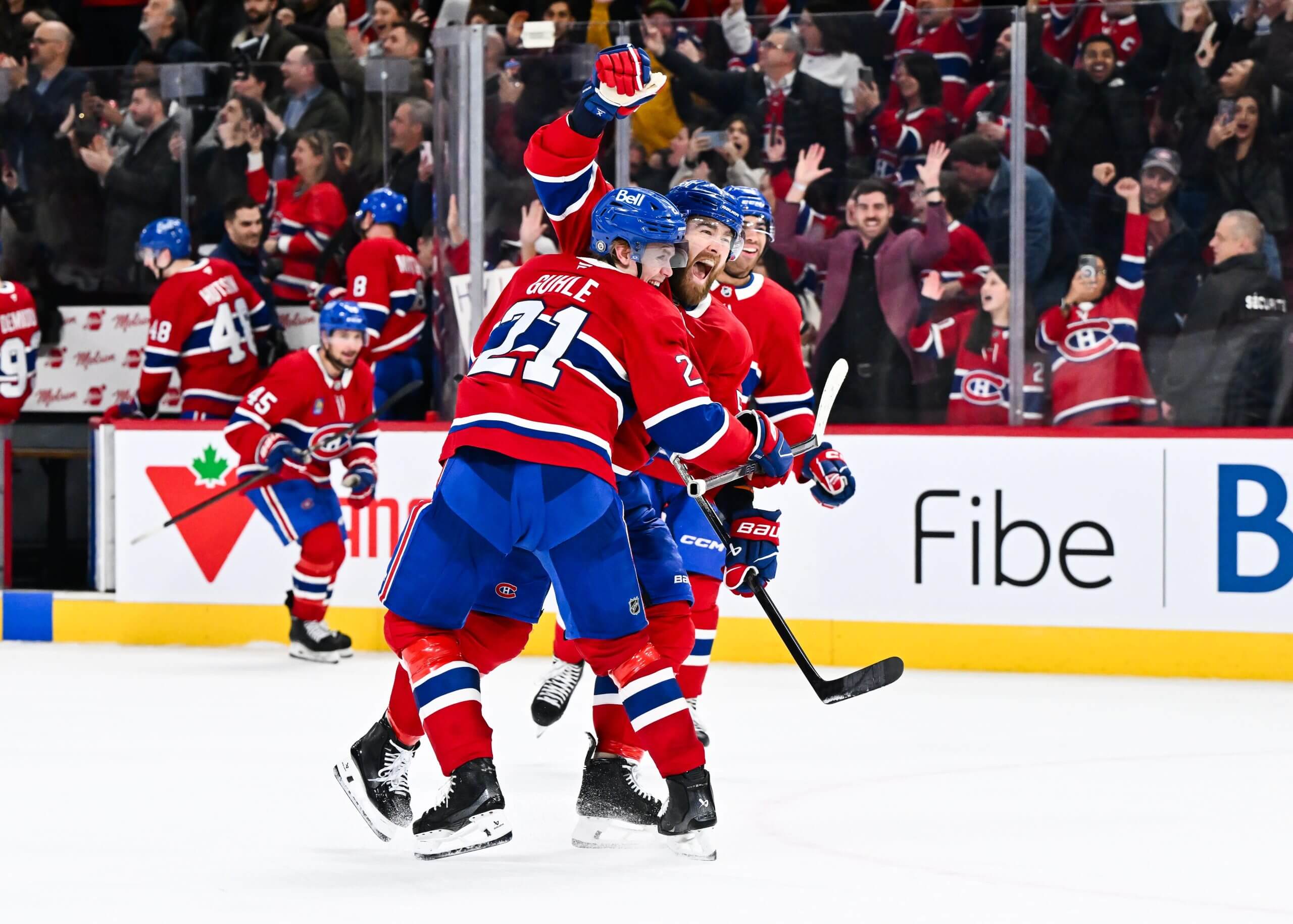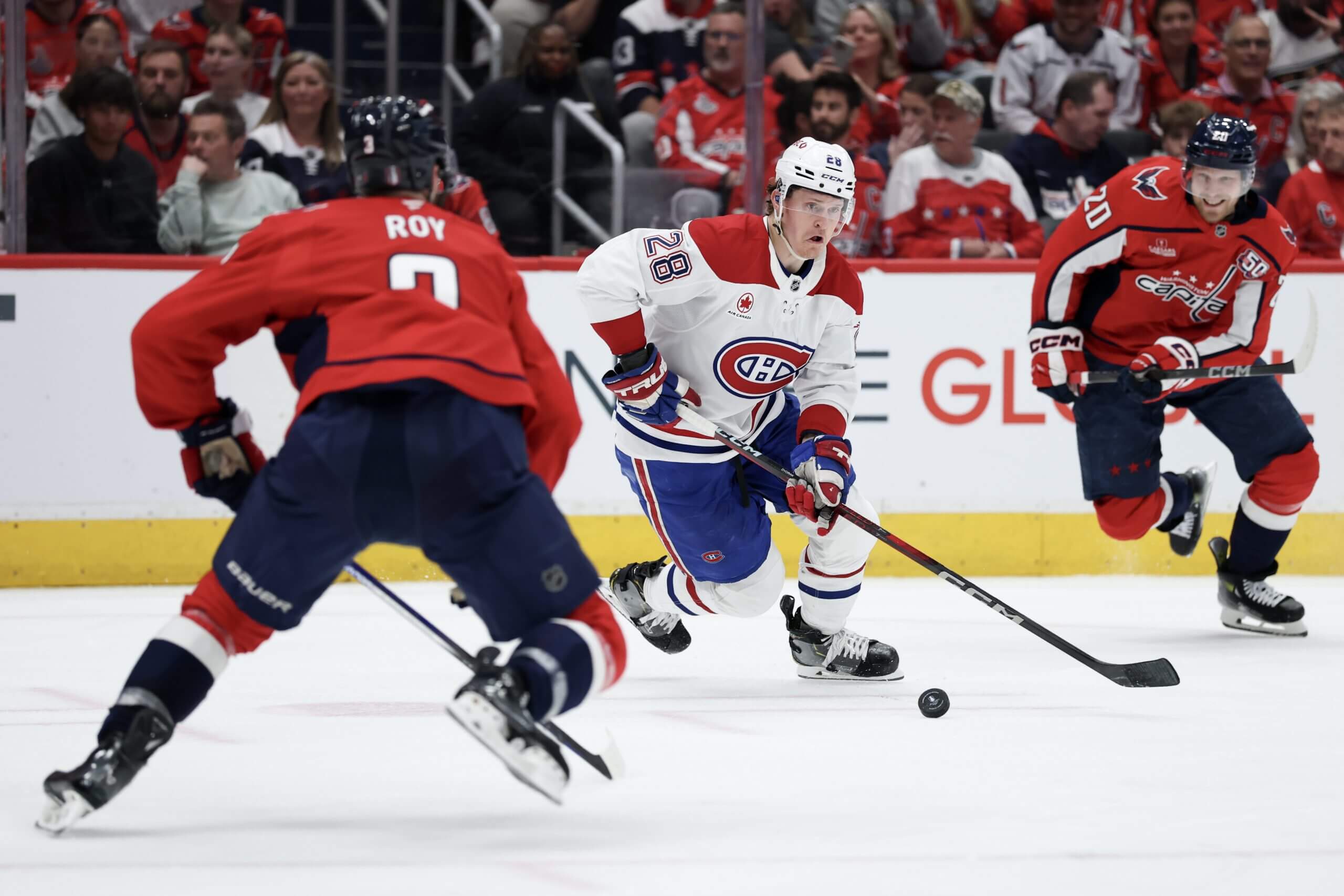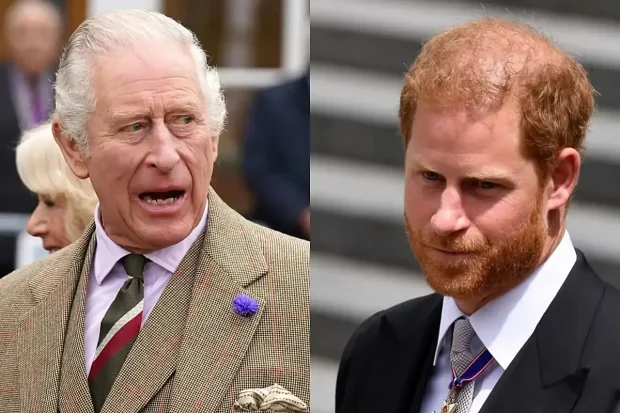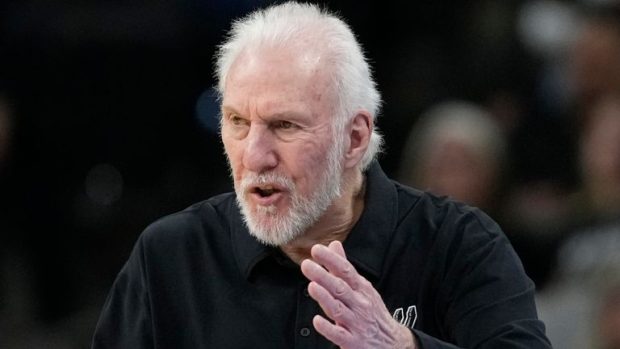
WASHINGTON – As Martin St. Louis called his final timeout of the Montreal Canadiens’ season with 96 seconds left and a two-goal deficit to make up, he tapped on the shoulders of his captain, his leading goal scorer and three players who are 21 or younger.
And with them, he sent Brendan Gallagher on the ice.
Advertisement
Nick Suzuki, Cole Caufield, Lane Hutson, Juraj Slafkovský and Ivan Demidov going out to try and extend the season, joined by Gallagher — the veteran whose current contract kicked in after the Canadiens reached the Stanley Cup Final in 2021 and who wasn’t sure he would be in a playoff scenario with this team again — could not have been more symbolic.
Those six going on the ice was both a snapshot of what is so promising about the Canadiens and what they need to ensure they maintain somewhat of a linear rise from this point forward.
The young talent will drive the bus, but veterans like Gallagher are just as important to not only get the Canadiens back to this point but eventually beyond it.
And once the final buzzer sounded, once the Canadiens’ season was over, every player congregated around defenceman David Savard, who had just finished the last game of his NHL career. He is retiring — his teammates had known it for months. Savard only said so publicly after the regular season ended, but regardless, now it was over.
While Savard’s on-ice impact had diminished over the course of his final NHL season, he is also symbolic of what the Canadiens need to find. Because Christian Dvorak might not be back next season. Same with Joel Armia. And that will be Gallagher one day, as well.
As Savard made his way down the handshake line, he got hugs and shared words with just about every Capitals player, ending with Alex Ovechkin, who said he tried to convince Savard to come back for one more season.
As difficult as Savard was to watch on the ice at times this season, that is the type of respected veteran that is so important to what the Canadiens are trying to accomplish. Not as important as the young talent, but close — probably closer than most people realize.

Kaiden Guhle and David Savard celebrate clinching a playoff spot with a win against the Carolina Hurricanes on April 16. (Minas Panagiotakis / Getty Images)
“I got to battle against Dave for a long time before he came here, and I had so much respect for him as a player,” Gallagher said. “He was hard to play against every shift. You learn more about him and you get to know him; I’m so happy I got a chance to play with him. The amount of respect, deservedly so, that he commands, he puts in the work every single day, earns his respect, and every single guy – not just the D-men – every single player that got to play with him is going to be better off going forward in his career. He just does things the right way.
Advertisement
“Those guys aren’t around (the league) too much, so this locker room was very fortunate to have a guy like that. Right up to the last second, he did it like a pro.”
The Capitals are a veteran team with youth sprinkled through the lineup. The Canadiens are the opposite. At some point, their youth will be veterans, but until then, maintaining that sprinkling of veterans will be vital in keeping this train on the tracks.
Because their youth has made it clear that the train has left the station.
Capitals coach Spencer Carbery was asked what the Canadiens had shown the rest of the league in this playoff series that lasted just five games, and his answer lasted close to four minutes.
There was a lot of significant stuff in there from someone who was an assistant coach with the Toronto Maple Leafs for two years before taking over the Capitals, but this is probably the most relevant part.
“That top line, and what Lane Hutson has become this year, that’s big-time stuff,” Carbery said. “In this league, what they’re able to do five-on-five, you have to, as an opposing coach — I remember this when I was in Toronto against Tampa Bay with (Nikita) Kucherov and (Brayden) Point … you would have to set a whole game plan against that line. When you’re on the bench, you’re just constantly, you’ve got coaches, you’ve got players that are (saying) ‘Is it Kucherov? Is it Point?’ trying to figure out who’s coming over (the boards).
“It’s the same way with Suzuki. It’s the same way. That’s the ultimate compliment I can pay … And they’re so young so now you’re just imagining, I don’t even want to go to that place with the next 10 years of having to deal with that.”
The next 10 years look extremely promising for the Canadiens considering who St. Louis sent out on the ice after that final timeout. Carbery watched the Canadiens power play when he worked for the Maple Leafs and there was basically one thing he needed to worry about: Suzuki getting the puck coming downhill on the right side of the ice and presenting a threat to shoot, or to turn his wrists and feed Caufield for a one-timer in the left circle.
Advertisement
It was a very effective play, but it was one play.
When Patrik Laine left the series after Game 2 with an upper-body injury he was clearly nursing for weeks, it completely changed the look of the Canadiens power play, and made it much more complicated to defend with Demidov as a one-timer option in the right circle opposite Caufield in the left circle.
But what made it most dangerous was the one-timer threat Suzuki posed playing the bumper, a position Point has played for the Lightning for years.
“That Suzuki one-timer sort of makes everyone have to go, ‘We’ve got to leave Caufield a little bit, we’ve got to leave Demidov,’” Carbery said. “So when you’re trying to cover up, it’s like plugging holes. There’s only so many holes you can plug.”
That power play has only spent three games together. It might spend a decade together. Hutson is likely to win the Calder Trophy this year; Demidov might very well win it next year. Or David Reinbacher might win it, as he is likely to join the group next season after playing his first AHL playoff game with the Laval Rocket at the same time that the Canadiens were playing their final game of the season.
Because of those rookies joining an already-young group, the immediate challenge facing the Canadiens is the loss of Savard and the potential loss of Dvorak and Armia, because those veterans helped nurture the culture that has gotten the Canadiens to this point.
“I mean, (Savard’s) fingerprints are all over everyone in the room,” Suzuki said. “Personally, he’s been someone I’ve looked up to and gone to for help. He’s just a first-class guy, and I wish we could extend the season a bit longer, his career a bit longer, but he’s been one of the best guys for this room and for everyone in here.”

Keeping veterans like Christian Dvorak around will be key to balancing out the Canadiens’ influx of youth. (Scott Taetsch / Getty Images)
The Canadiens accomplished so much this season, but it felt empty in their dressing room afterwards. Everyone thought the Canadiens were playing with house money in this series, that whatever they accomplished was gravy, that just being there was beneficial to what they are trying to build for the long-term.
Advertisement
Everyone thought that except the Canadiens.
“There are only a certain amount of teams that make it and we’re still lucky enough to play right now,” Caufield said the day before Game 5 when presented with the notion of playing with house money. “There’s a lot of work that went into that 82-game season. I don’t think there’s flukes at all. It’s a long season. It’s a lot of work to get to where we’re at. For sure, we’re still in this thing.”
There was a lot of work for the Canadiens to reach this point, that is very true. There were ups and downs, winning streaks and losing streaks, and they had a legitimate chance to win this series despite the lopsided final score. In fact, the Canadiens could have won every game in this series except the last one, and that was the most frustrating part.
“It’s both encouraging and annoying,” Suzuki said. “We get it to OT, they score off a faceoff in the first game and I felt like we could have easily won that in regulation, that could have swayed the series. But that’s playoffs. Every team’s kind of going through it. You win a game, you feel really good. You lose a game, you feel awful.”
That’s playoffs. That’s what the Canadiens have learned — starting with those five players who took the ice with Gallagher following St. Louis’ final timeout of the Canadiens season.
This is hard to accept for a team that had genuine belief they could beat the Capitals. But this will be easy to see as a big-picture victory once a little time has passed, as a successful season that means so much for the future, and as a message sent to the rest of the league: the Canadiens are coming, and you’d better game plan for them going forward.
“The pain that you feel right now is normal, but it’s not even close to what’s coming, the joy that’s coming,” St. Louis said. “Obviously there’s nothing guaranteed, you’ve got to keep putting a foot forward and working on it. But it’s very encouraging, not just the talent that we have, but to me what’s more at the front of that is the individuals that we have. We have great humans.
“It’s a fun group to lead.”
(Top photo of the Canadiens waiting for the handshake line: Geoff Burke / Imagn Images)
This news was originally published on this post .











Be the first to leave a comment